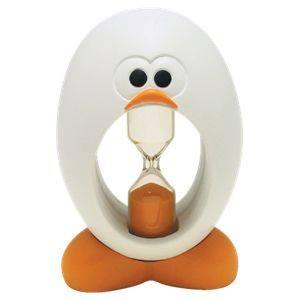Frozen Embryo Transfer Step-by-Step Guide

You’re about to learn how frozen embryo transfer (FET) works, what it means, what to expect in the timeline, the medications involved, and how to prepare the night before. Whether you’re considering a frozen blastocyst transfer, a natural frozen embryo transfer, or a medicated FET, this guide will walk you through every step. By the end, you’ll feel confident moving forward in your journey.
1. What is Frozen Embryo Transfer (FET)?
Let's start with the basics. A frozen embryo transfer means transferring a previously cryopreserved embryo, a fertilized egg kept in ultra‑cold storage, into your uterus during the correct phase of your natural or medicated cycle. You might hear it called FET IVF, frozen egg transfer (though technically, it’s still an embryo rather than just an egg), or frozen blastocyst transfer, if the embryo is at the blastocyst stage, that's about five to six days after fertilization.
In short, frozen embryo transfer meaning is simple: using a frozen embryo to achieve pregnancy later, once your body and timing are right. The key benefits? You avoid the hormone load and cost of a full new stimulated cycle, and you can give your uterus a more natural chance to receive the embryo.
2. Overview of the FET Process
Here’s a peek at what’s ahead in the frozen embryo transfer process:
- Initial preparation & consultation
- Choosing a protocol: Natural or medicated?
- Detailed FET IVF timeline
- Medication plan with frozen embryo transfer drugs
- Lab work and scheduling
- Thawing and transfer of the embryo
- What to do the night before embryo transfer
- Post‑transfer care and testing
We’ll unpack each of these in easy, step‑by‑step detail, so you know what to expect, and when.
3. Natural vs. Medicated FET
Natural Frozen Embryo Transfer Timeline
If your menstrual cycle is regular, you might choose a natural frozen embryo transfer. You’re letting your body guide the way:
- Day 1: First day of your period.
- Monitoring: Doctors track your natural hormone surge (LH) to identify ovulation.
- Timing: Embryo transfer typically occurs 5 days after ovulation, for blastocyst transfer.
This is the most "natural" option that mimics a regular conception timeline.
Medicated Frozen Embryo Transfer Timeline
Many opt for a medicated FET to control timing more precisely. Here's how it usually unfolds:
- Estrogen phase: You start estrogen pills or patches to build the uterine lining.
- Progesterone addition: After your lining is thick enough, you begin progesterone.
- Transfer timing: The embryo is transferred after the right number of days of progesterone, depending on whether it’s a blastocyst or earlier-stage embryo.
Typically, the medicated frozen embryo transfer timeline takes about 2–3 weeks from start to transfer. You'll be receiving frozen embryo transfer drugs like estrogen and progesterone, plus maybe additional support like low-dose aspirin or steroids, per your clinic’s protocol.
4. Step‑by‑Step Frozen Embryo Transfer Process
Initial Visit & Counseling
You'll meet with your fertility specialist, review your prior IVF/cryopreservation records, and choose between a natural or medicated approach.
Baseline Testing & Scheduling
Blood tests and ultrasound help ensure your uterus lining is thin and hormones are at baseline.
Starting Medications (if using a medicated protocol)
- Begin estrogen (pill, patch, or injection)
- Track response with ultrasounds and bloodwork
- When the lining is ≥7 mm, add progesterone
Timing the Transfer
In a natural cycle, the frozen embryo transfer timeline is based on your natural ovulation; transfer happens ~5 days later.
In a medicated cycle, after estrogen and progesterone, you follow the days post-progesterone for a frozen blastocyst transfer.
Preparing the Embryo (Thaw Day)
On the day of the transfer, the lab thaws your cryopreserved embryo, then confirms it looks healthy and ready.
Transfer Procedure
This is quick and mostly painless, using a thin catheter, the embryo is placed in your uterus. A full bladder may be needed for ultrasound guidance.
After the Transfer
You rest briefly. Continue medications as instructed. A pregnancy test typically happens about 10–14 days later.
5. What to Do the Night Before Embryo Transfer
Ah, this is important! Here's your go‑to list for what to do the night before embryo transfer:
- Take any evening or next‑day frozen embryo transfer drugs (like progesterone, if scheduled at night).
- Stay hydrated, drink water, especially if you need a full bladder for the transfer.
- Avoid caffeine or heavy meals; light, balanced dinner is ideal.
- Plan your morning calmly, know your clinic arrival time.
- Wear comfortable, loose clothing.
- Try to relax: read, meditate, or listen to calming music. Stress can make you tense, physically and emotionally.
- Set your alarm early, better to be rested than rushed.
A little practical preparation helps your mind and body be as ready as possible.
6. Frozen Embryo Transfer Drugs and Medications
Here’s a quick overview of the frozen embryo transfer drugs and what role they play:
- Estrogen (oral, patch, or injection): Builds a thick, receptive uterine lining.
- Progesterone (vaginal gel/suppositories, oral, or injection): Helps create the right window for embryo implantation.
- Adjunct medications (optional, per clinic):
- Aspirin (low dose): to boost blood flow.
- Heparin or steroids: depending on medical history.
- Antibiotics: if infection risk is present.
Your doctor will tailor the medicated frozen embryo transfer timeline and drug schedule to your body and cycle specifics, each step is planned to sync perfectly with your frozen embryo transfer procedure.
Where You Go From Here
You’re now equipped with a full, step‑by‑step guide to frozen embryo transfer, covering everything from what cryopreserved embryos are, to how the frozen embryo transfer process unfolds, on which day of cycle a frozen embryo transfer is done, and what to do the night before. Whether you plan a natural or medicated FET, the frozen embryo transfer timeline and your medication plans are your roadmap, and now, so are you. You’ve got this, and here’s hoping your journey ahead is hopeful, supported, and successful.
FAQs You Might Have
Q 1: Can I eat normally before transfer?
Yes, stick to a light, easy meal. Avoid overly greasy or heavy foods.
Q 2: Will I ovulate on my own in a medicated cycle?
No, medications suppress natural ovulation and control timing.
Q 3: How long is the wait after transfer to find out?
You’ll do a blood test (hCG) usually 10–14 days post-transfer.
Q 4: Can I exercise after transfer?
Light movement is OK, but avoid high-impact or strenuous activity for a few days.
Q 5: What’s a “frozen egg transfer”?
Often just another term used when the embryo was created from a frozen egg. The actual process is still a frozen embryo transfer once fertilized.

